OlenaMykhaylova/iStock/GettyImages
Atlantic salmon fillets are prized for their silky texture, distinctive flavor and sheer versatility. Salmon cooking methods are almost unlimited, though poaching, grilling, broiling, and pan-frying all bring out the best in fresh salmon. The key is to avoid overcooking it so you retain the soft, juicy tenderness that the best salmon fillet recipes are designed to showcase.
Poached Salmon
Poaching simply means cooking in a small amount of liquid. Almost any liquid will do, from water to broth to wine, or a combination of liquids.
Coat the bottom of a skillet with a light film of nonstick cooking spray or oil. Canola or vegetable oil will work, though extra virgin olive oil adds more flavor. Heat the skillet on medium until the oil starts to shimmer. Add the salmon fillets, skin side down. Pour in just enough liquid to come halfway up the sides of the fillets. If you are using wine, mix it half and half with water or broth, otherwise it can evaporate too quickly and scorch the bottom of the pan. Season your fillets with kosher salt, cracked black pepper and a squeeze or two of lemon juice. Cover the skillet, and cook the salmon until the top is opaque, about 5 minutes. Turn off the heat and let the salmon rest in the poaching liquid for another 5 minutes, or until it is opaque throughout and flakes easily with a fork.
Grilled Salmon
Grilling salmon not only brings out its unique flavor, it's an excellent method for those who are not fond of the smell of fish in the kitchen. Lightly coat your cold grill with nonstick cooking spray, if you're cooking salmon with the skin on. To keep skinless fillets from falling through the bars, use an oiled fish basket or heavy-duty aluminum foil on your grill. Heat the grill to medium and add the fillets. Season them with kosher salt, cracked black pepper, lemon juice and the herbs and spices of your choice. Cumin and thyme work well, or use coriander and chili powder for a deeper flavor. Grill the salmon for 10 minutes per inch of thickness, turning the fillets halfway through for skinless pieces.
Broiled Salmon
Broiling salmon adds a little bit of crispness that perfectly complements the fish's velvety texture. Season your fillets well, coating both sides if they're skinless. Place the seasoned salmon on a lightly oiled broiler pan. Broil on medium, cooking for 10 minutes per inch of thickness. Carefully turn skinless fillets halfway through the cooking time with a spatula or tongs.
Pan-Fried Salmon
Pan-frying is the quickest and simplest way to cook salmon without sacrificing flavor. Line the bottom of a skillet with nonstick cooking spray or oil. Any oil will do, though olive oil brings out salmon's natural richness. Heat the skillet until the oil begins to shimmer and you can smell its scent. Add your seasoned fillets, skin side down unless you're using skinless ones. Cook the salmon for 10 minutes per each inch of thickness, turning skinless fillets halfway through. The fillets are done when they are fully opaque and flake easily with a fork.
Related Articles
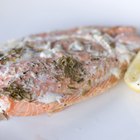
The Best Ways to Cook Salmon Fillets on ...
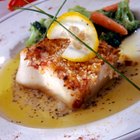
How to Pan Fry Sea Bass
How to Cook a Bass Fillet
How to Cook Salmon to Moist & Tender ...

How to Pan Sear Sea Bass
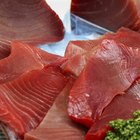
How to Cook Yellowfin Tuna on a George ...

Ways to Cook Salmon Without Butter

How to Cook Jamaican Jerk Salmon

How to Cook Panfish in the Oven

How to Cook Rockfish Fillets
How to Cook Seasoned Keta Salmon
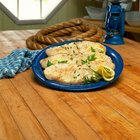
Substitutes for a Tuna Steak
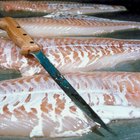
How to Grill a Cod Fish

How to Cook Saba Fish
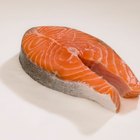
How to BBQ Salmon Fillets
How to Cook Atlantic Cod Fillets

How to Cook Trevally

How to Bake a Whole Cat Fish

How to Cook Trigger Fish

How to Cook Walleye by Broiling
References
Resources
Warnings
- Cook your salmon thoroughly; undercooked salmon can contain a bacteria that can be harmful to pregnant women, older persons and those with weakened immune systems. To make sure the fish is completely cooked, insert an instant-read meat thermometer into the thickest portion of the fillet. If it reads at least 145 F, it's done.
Writer Bio
Brynne Chandler raised three children alone while travelling, remodeling old homes, taking classes at the Unioversity of California Northridge and enjoying a successful career writing TV Animation. Her passions include cooking, tinkering, decorating and muscle cars. Brynne has been writing fun and informative non-fiction articles for almost a decade. She is hard at work on her first cookbook, which combines healthy eating with science-based natural remedies.